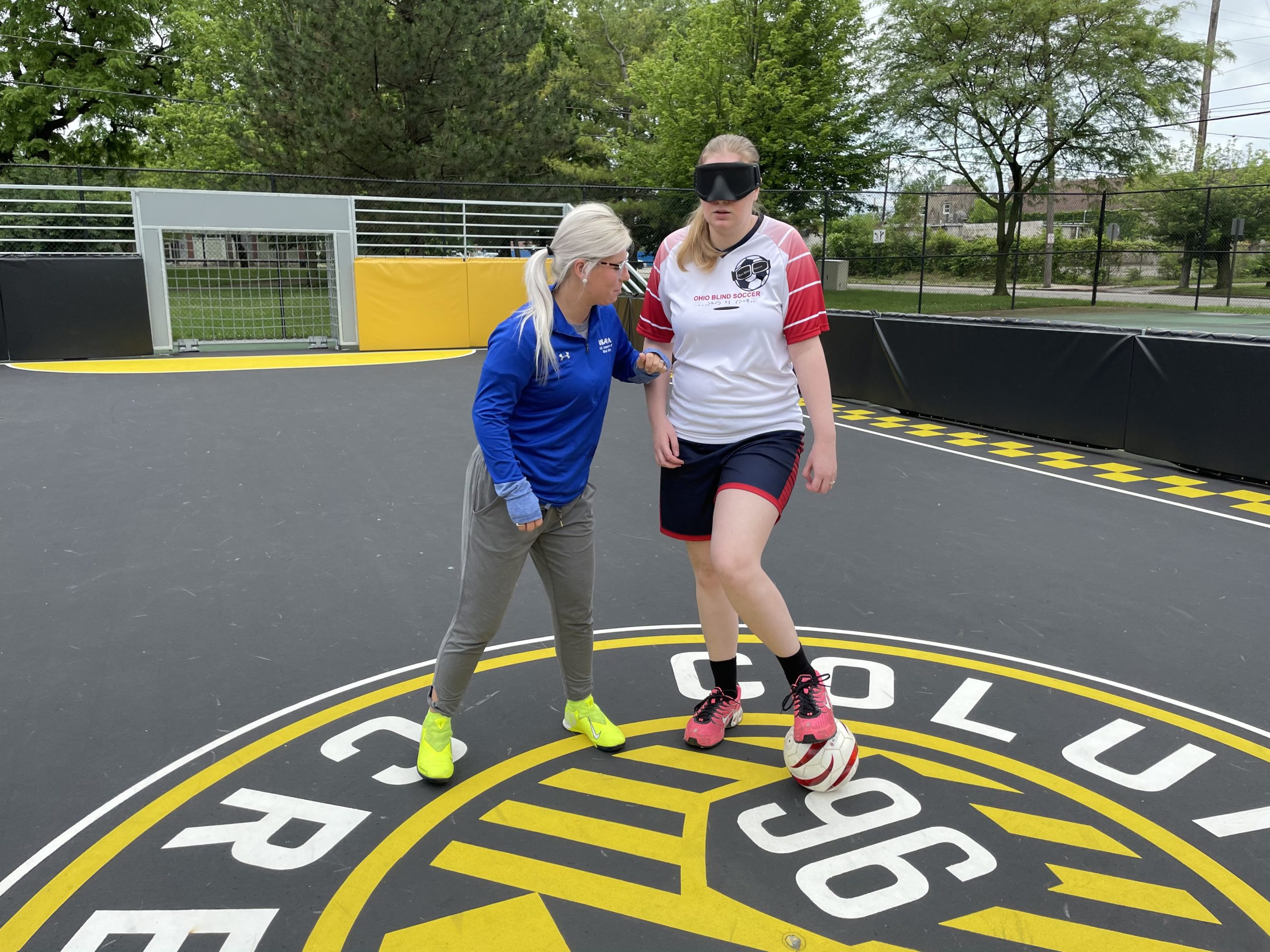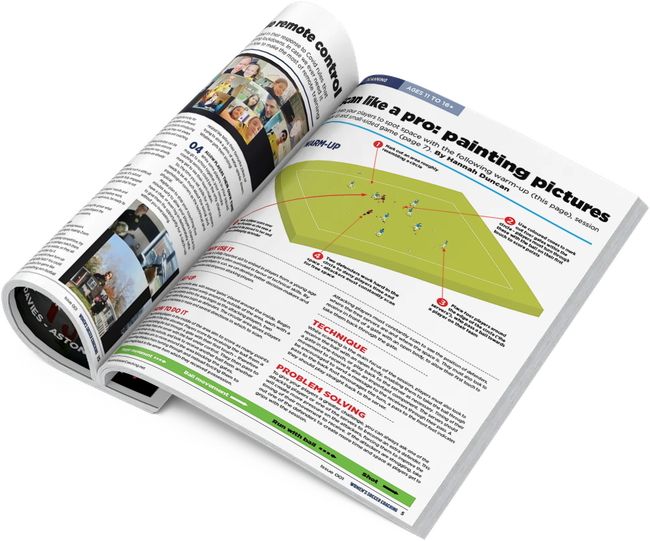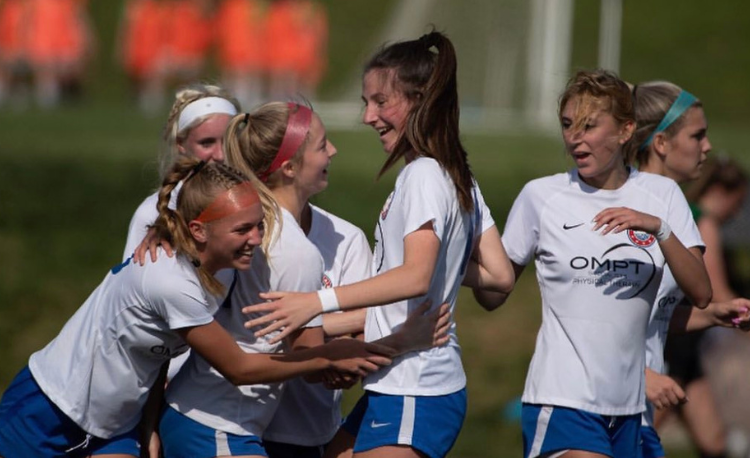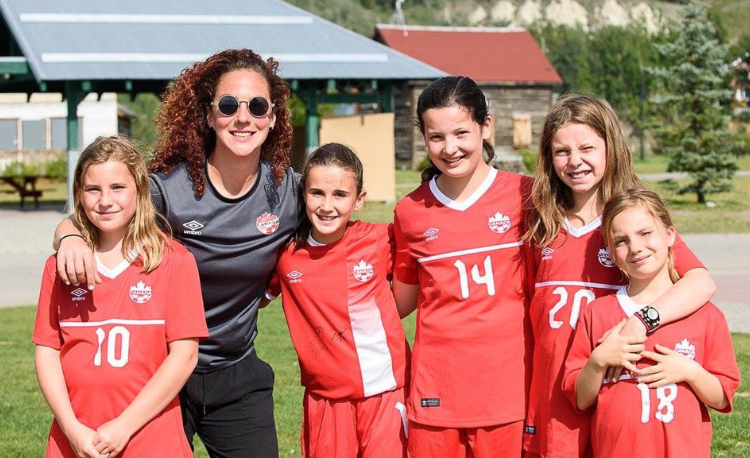You are viewing
1 of your 3 free articles
Blind soccer: a unique art in communication
Coaching Adviceby Katie Smith
Coach Katie Smith explains how crucial clear messaging is when none of your players can see...
Coach Katie Smith explains how crucial clear messaging is when none of your players can see...
Blind soccer is a relatively new sport to the US, with very few coaches in the country. I am so thankful to be one of them.
It is very different from sighted soccer. Blind soccer is a 5v5 game, with four blind or visually impaired players who all wear eyeshades to level out the playing field. The goalkeepers are sighted.
Matches are played on an area similar to a futsal field (40x20m) and there are sideboards along the length of the field used for the athlete’s orientation within the pitch.
Three guides assist with communication - the goalkeeper talks to the players in the defensive third of the field, the coach at midfield can communicate in the middle third, and an assistant coach or sighted guide is behind the opponent’s goal to talk to the offensive third of the field.
These guides are crucial for players to shoot the ball, locate it on the field or in case any lose orientation. Most of the communication, though, is through the athletes themselves.
Teammates are constantly using key phrases, like "here", "come to" and "sideboard", while defenders are required to say "voy" when challenging an opponent. This allows for minimal collisions and enables the attacker to decipher where a defender is.
Coaching athletes who are blind or visually impaired means you must communicate in a different way. You cannot just show players skills or drills - without sight, you must be very verbal.
From directions of a drill to understanding the defensive form, you as the coach are constantly describing positioning of the athlete’s body and how they are to proceed down the field.
The first thing you must explain is the orientation of the field. Players need to know where they are located within the pitch and sideboards, the goal location, and their formation on the field.
When describing the width of the field, I will set athletes along one sideboard and tap or say the word "here". They can understand the distance from the sound.
We will practice a few drills with them that focus on localizing the sound of the ball and staying in position as a team when a teammate is going after the ball.
When first teaching some of the skills, such as dribbling, you use words such as “caressing the ball”, so players know not to kick the ball out too far in front of them and lose the location of the ball.
You must describe what area of the foot they need to use to dribble the ball, along with how far apart their feet should be and at what angle. Constant explanation is pertinent for the players to understand what you are asking of them, no matter the skill or drill, whether in practice or in game.
Because there is constant communication on the field - with the ball, the players and the guides - blind soccer requires immense concentration. It can be difficult to focus on the ball, your location and constant movement within the pitch.
But even with this difficulty, the team has built an understanding of the communication needs for each player. The ability of these athletes to communicate and orientate themselves to the field astounds me.
When we are playing a scrimmage, there will be a breakaway and the players' communication to each other, accuracy of the pass right to their feet and the ability to shoot a moving ball without seeing it is incredible.
The best part of the game is that these athletes are shooting at experienced sighted goalies. They truly motivate me to work harder as a coach every day.
No matter if you are coaching a blind soccer team or a sighted soccer team, communication is pertinent, not only on the field but off it.
I believe understanding your athletes is a large part of the game. I try to get to know every one of my players so when it is time to play I know where their headspace is within practice or on gameday.
I get to know them from their athletic abilities, health perspective, and personally. My openness on and off the field allows me to create a relationship where I am respected and trusted within the soccer pitch.
My athletes know me and know what to expect on the field. They also know I am there for them off the field, too.
Communicating who you are as a coach, your expectations, and your passion for them to succeed will only better you as a coach and allow your athletes to come as their best selves to practice daily.
From directions of a drill to understanding the defensive form, you as the coach are constantly describing positioning of the athlete’s body and how they are to proceed down the field.
The first thing you must explain is the orientation of the field. Players need to know where they are located within the pitch and sideboards, the goal location, and their formation on the field.
When describing the width of the field, I will set athletes along one sideboard and tap or say the word "here". They can understand the distance from the sound.
"The players' ability to communicate and orientate themselves astounds me..."This is also true with the ball, which has ball bearings in it to make a rattling sound. As players get more comfortable with their mobility on the field, they learn to gauge the distance of the sound of the ball and localize the direction.
We will practice a few drills with them that focus on localizing the sound of the ball and staying in position as a team when a teammate is going after the ball.
When first teaching some of the skills, such as dribbling, you use words such as “caressing the ball”, so players know not to kick the ball out too far in front of them and lose the location of the ball.
You must describe what area of the foot they need to use to dribble the ball, along with how far apart their feet should be and at what angle. Constant explanation is pertinent for the players to understand what you are asking of them, no matter the skill or drill, whether in practice or in game.
Because there is constant communication on the field - with the ball, the players and the guides - blind soccer requires immense concentration. It can be difficult to focus on the ball, your location and constant movement within the pitch.
But even with this difficulty, the team has built an understanding of the communication needs for each player. The ability of these athletes to communicate and orientate themselves to the field astounds me.
When we are playing a scrimmage, there will be a breakaway and the players' communication to each other, accuracy of the pass right to their feet and the ability to shoot a moving ball without seeing it is incredible.
The best part of the game is that these athletes are shooting at experienced sighted goalies. They truly motivate me to work harder as a coach every day.
No matter if you are coaching a blind soccer team or a sighted soccer team, communication is pertinent, not only on the field but off it.
I believe understanding your athletes is a large part of the game. I try to get to know every one of my players so when it is time to play I know where their headspace is within practice or on gameday.
I get to know them from their athletic abilities, health perspective, and personally. My openness on and off the field allows me to create a relationship where I am respected and trusted within the soccer pitch.
My athletes know me and know what to expect on the field. They also know I am there for them off the field, too.
Communicating who you are as a coach, your expectations, and your passion for them to succeed will only better you as a coach and allow your athletes to come as their best selves to practice daily.
Related Files
WSC-007-blind-soccer-a-unique-art-in-communication.pdfPDF, 364 KB
Newsletter Sign Up
Newsletter Sign Up
Discover the simple way to become a more effective, more successful soccer coach
In a recent survey 89% of subscribers said Women's Soccer Coaching makes them more confident, 91% said Women's Soccer Coaching makes them a more effective coach and 93% said Women's Soccer Coaching makes them more inspired.
*includes 3 coaching manuals
Get Inspired
All the latest techniques and approaches
Women's Soccer Coaching offers proven and easy to use soccer drills, coaching sessions, practice plans, small-sided games, warm-ups, training tips and advice.
We've been at the cutting edge of soccer coaching since we launched Soccer Coach Weekly in 2007, creating resources for the grassroots youth coach, following best practice from around the world and insights from the professional game.








